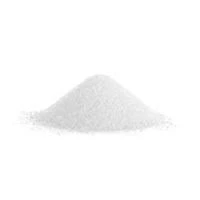
sodium acid pyrophosphate food additive
Understanding Sodium Acid Pyrophosphate as a Food Additive
Sodium acid pyrophosphate (SAPP) is a versatile food additive that plays a crucial role in the food industry. It is primarily used as a leavening agent, acidity regulator, and stabilizer in various food products. With the growing demand for processed foods and baked products, understanding the function and safety of SAPP is essential for both consumers and food manufacturers.
What is Sodium Acid Pyrophosphate?
Sodium acid pyrophosphate is a white, crystalline powder that is chemically classified as a sodium salt of pyrophosphoric acid. Its chemical formula is Na2H2P2O7. This compound is typically manufactured through the reaction of sodium bicarbonate with phosphoric acid, leading to the production of sodium pyrophosphate. SAPP is recognized for its ability to release carbon dioxide when it comes into contact with alkaline substances, making it an effective leavening agent in baking.
Applications in Food Products
SAPP is predominantly found in baked goods, such as cakes, muffins, pancakes, and biscuits. It helps these products rise by reacting with other ingredients like baking soda. The release of carbon dioxide creates air pockets in the batter, resulting in a light and fluffy texture.
In addition to its leavening properties, SAPP serves as an acidity regulator in convenience foods, canned vegetables, and sauces. It helps maintain the desired pH level, enhancing both flavor and preservation. Moreover, SAPP is employed as a stabilizer in certain dairy products, contributing to the uniformity of texture and preventing the separation of ingredients.
Safety and Regulatory Aspects
sodium acid pyrophosphate food additive

The safety of sodium acid pyrophosphate has been evaluated and recognized by several food safety authorities, including the U.S. Food and Drug Administration (FDA) and the European Food Safety Authority (EFSA). These organizations have classified SAPP as Generally Recognized As Safe (GRAS), indicating that it is safe for consumption when used within established limits.
However, as with any food additive, some individuals may have sensitivities or allergic reactions to SAPP. While such instances are rare, it is essential for consumers with specific dietary restrictions to read labels and be aware of potential allergens in processed foods.
Nutritional Considerations
Sodium acid pyrophosphate is a phosphate compound, and as such, its consumption contributes to dietary phosphorus intake. Phosphorus plays a vital role in various physiological functions, such as bone health and energy metabolism. However, excessive intake of phosphates can be a concern, particularly for individuals with kidney disease, as it may lead to imbalances in phosphorus and calcium levels in the body.
In moderation, SAPP is considered safe for most individuals, and its presence in food products can help enhance the quality and texture of processed foods. It is particularly significant in improving the sensory attributes of baked goods, making them more appealing to consumers.
Conclusion
Sodium acid pyrophosphate is an essential food additive used extensively in the food industry for its leavening, stabilizing, and acidity-regulating properties. Its safety has been affirmed by various health authorities, and it is widely used in numerous food applications. As with all food additives, moderation is key, and consumers should be informed about the ingredients in their food. Overall, SAPP enhances the quality of processed foods, contributing to the enjoyment and convenience of modern diets. As we continue to explore advancements in food science, understanding additives like sodium acid pyrophosphate will remain vital for ensuring food safety and quality.
-
Pure Sodium Dichloroisocyanurate Dihydrate | Powerful DisinfectantNewsAug.29,2025
-
Industrial Chemicals: Quality & Purity for Every IndustryNewsAug.28,2025
-
Nitrile Rubber Honoring Strict Production StandardsNewsAug.22,2025
-
Aspartame Ingredients Honoring Food Safety ValuesNewsAug.22,2025
-
Fertilizer for Balanced Plant NutritionNewsAug.22,2025
-
Cyanide Gold Processing with High Purity AdditivesNewsAug.22,2025
-
Formic Acid in Textile Dyeing ApplicationsNewsAug.22,2025
Hebei Tenger Chemical Technology Co., Ltd. focuses on the chemical industry and is committed to the export service of chemical raw materials.
-

view more DiethanolisopropanolamineIn the ever-growing field of chemical solutions, diethanolisopropanolamine (DEIPA) stands out as a versatile and important compound. Due to its unique chemical structure and properties, DEIPA is of interest to various industries including construction, personal care, and agriculture. -

view more TriisopropanolamineTriisopropanolamine (TIPA) alkanol amine substance, is a kind of alcohol amine compound with amino and alcohol hydroxyl, and because of its molecules contains both amino and hydroxyl. -

view more Tetramethyl Thiuram DisulfideTetramethyl thiuram disulfide, also known as TMTD, is a white to light-yellow powder with a distinct sulfur-like odor. It is soluble in organic solvents such as benzene, acetone, and ethyl acetate, making it highly versatile for use in different formulations. TMTD is known for its excellent vulcanization acceleration properties, which makes it a key ingredient in the production of rubber products. Additionally, it acts as an effective fungicide and bactericide, making it valuable in agricultural applications. Its high purity and stability ensure consistent performance, making it a preferred choice for manufacturers across various industries.





